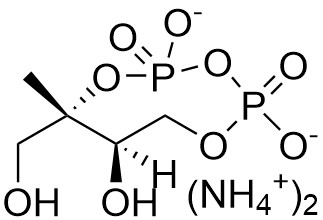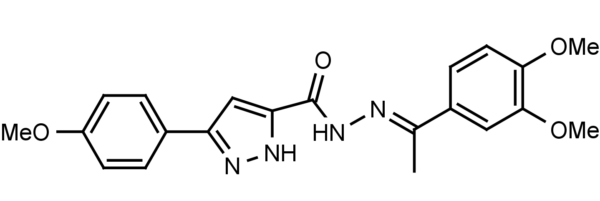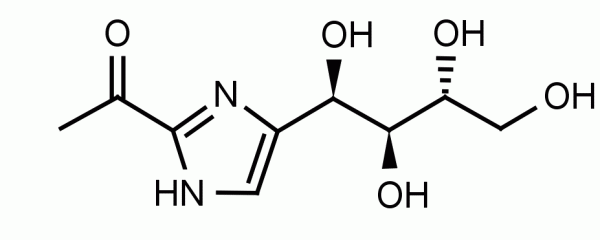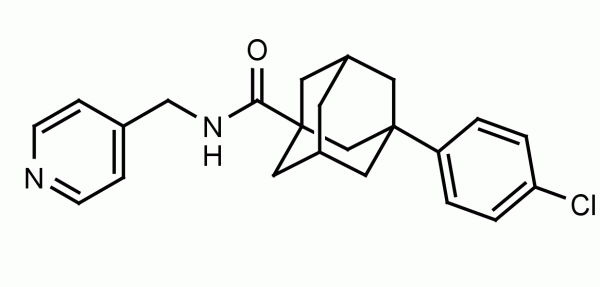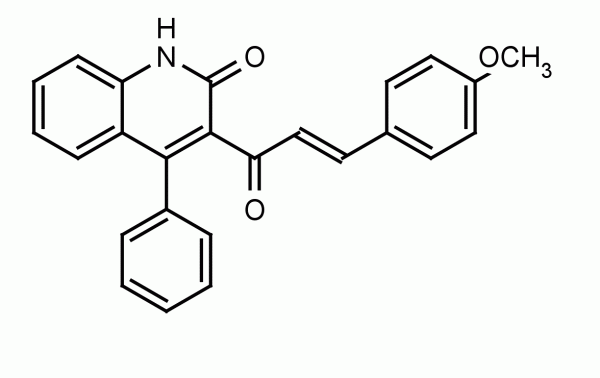Isoprenoid compounds are a diverse group of natural products which are essential components in all cells. Isoprenoids are biosynthesized from the simple precursors isopentenyl diphosphate (IPP) and dimethylallyl diphosphate (DMAPP). Eukaryotes, fungi, and some gram-positive bacteria produce IPP through the mevalonate (MVA) pathway whereas gram-negative and some gram-positive bacteria utilize the non-mevalonate or 2-C-methyl-D-erythritol-4-phosphate (MEP) pathway. 2-C-Methyl-D-erythritol 2,4-cyclophosphate (cMEPP) is an intermediate in the non-mevalonate pathway. It is formed by from MECDP Synthase from CDP-MEP and converted to 1-hydroxy-2-methyl-2-buten-4-yl diphosphate (HDMAPP) by IspG (GcpE).
Featured in Publications
1) Xiao, Y., T. Savchenko, et al. (2012). “Retrograde Signaling by the Plastidial Metabolite MEcPP Regulates Expression of Nuclear Stress-Response Genes.” Cell 149(7): 1525.
2) Zhou, K., R. Zou, et al. (2012). “Metabolite Profiling Identified Methylerythritol Cyclodiphosphate Efflux as a Limiting Step in Microbial Isoprenoid Production.” PLoS ONE 7(11): e47513.
3) Hsiao, C.-H. C. and A. J. Wiemer (2018). “A power law function describes the time- and dose-dependency of Vγ9Vδ2 T cell activation by phosphoantigens.” Biochem Pharmacol 158: 298-304.
4) Ma, Y., et al. (2019). “Metabolic Engineering of the MEP Pathway in Bacillus subtilis for Increased Biosynthesis of Menaquinone-7.” ACS Synthetic Biology 8(7): 1620-1630.
Bulk discounts available, please email echelon@echelon-inc.com for information.
Alternate Names: cMEPP, MEcPP
